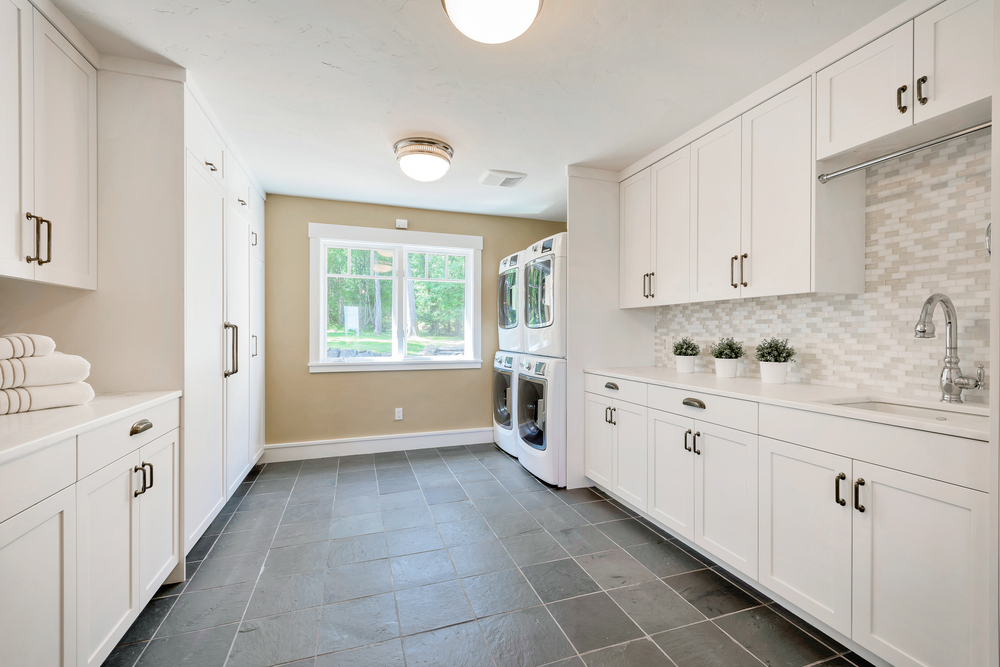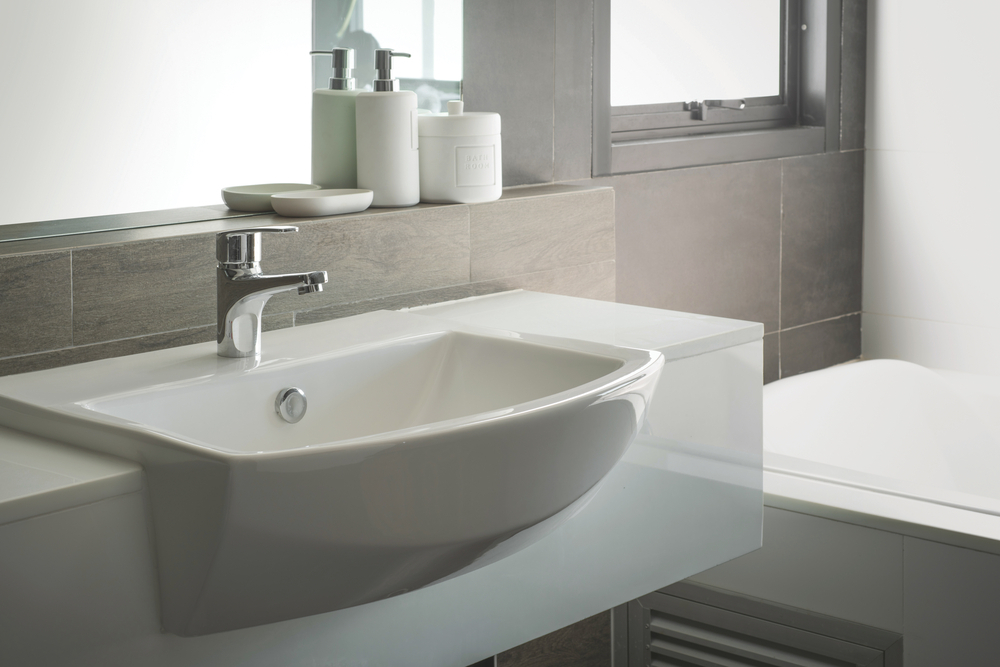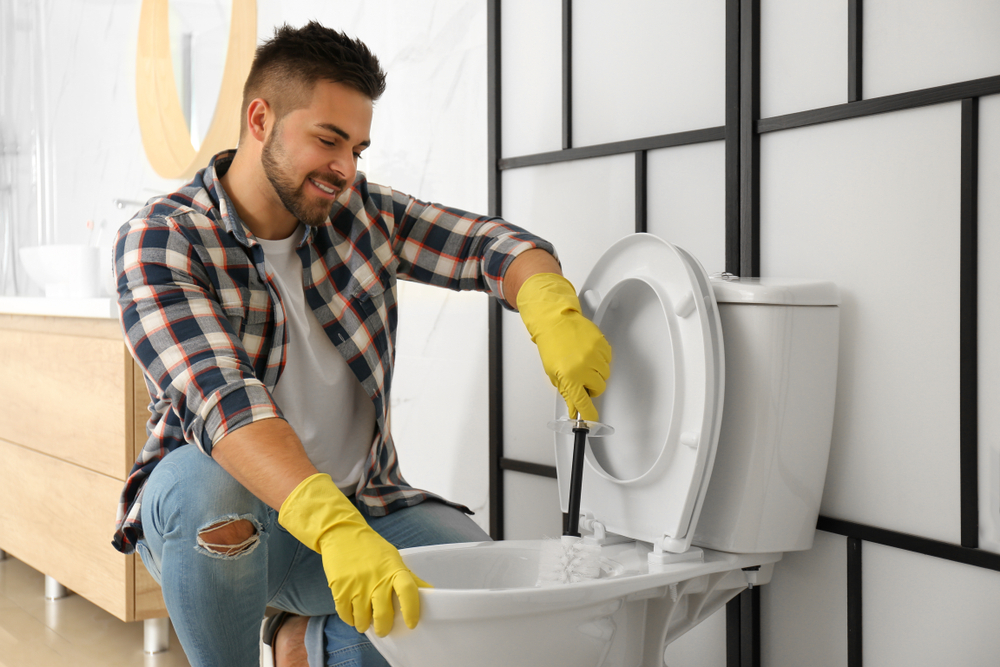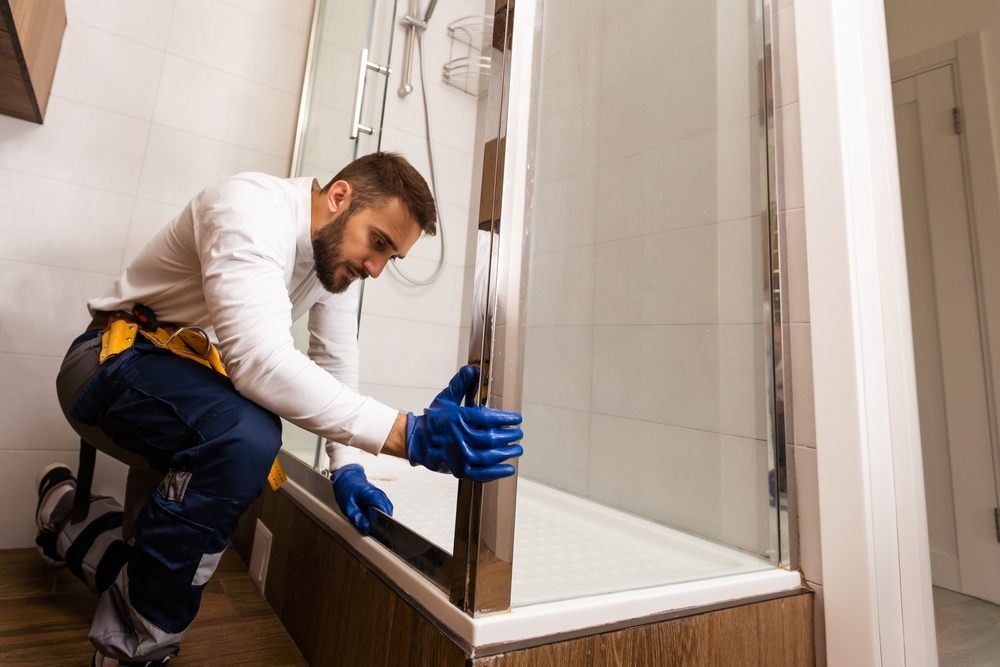Creating a bathroom calls for more than just selecting tiles and fittings. Comfort as much as utility depend on a well-considered plumbing layout. Good plumbing guarantees effective drain-away and water flow where it is required. From knowing your plumbing system to the newest design trends, this book will cover all you need to know about bathroom plumbing layout and design.
Understanding Your Bathroom Plumbing System
Types of Bathroom Plumbing Systems
- Traditional Plumbing Systems: Older houses most often feature traditional systems. Separate pipelines for hot and cold water abound in them. The water source in this arrangement is channeled via several pipes to the fixtures.
- Wet Room Plumbing Systems: A newer substitute are wet rooms, in which the shower space is combined with the remainder of the bathroom. The floor is waterproof overall, and drainage is meant to withstand lots of water.
- Combined Systems: Many modern bathrooms combine wet room systems with classic designs. This method offers adaptability and fits many demands in the same area.

Components of a Plumbing System
Pipes: Pipes are the main arteries of your plumbing system. They bring garbage away and water to your fixtures. Typical elements consist of:
- Lightweight, reasonably priced, corrosion-resistant PVC (polyvinyl chloride) Ideal for drain and garbage lines.
- Often found in supply lines, copper is dependable and strong. Copper boasts a long lifetime and resists corrosion.
- PEX (cross-linked polyethylene) is flexible and simple to install. Perfect for drain and supply lines alike.
Fixtures: Fixtures are the everyday items you come into touch with. They consist of:
- Bathtubs
- Toilets
- Showers
- Sinks
- Toilets
Drains from your fixtures clear used water and garbage. Good drain design guarantees effective waste elimination and helps to avoid obstructions.
Common Issues and Their Causes
- Clogs: Usually stemming from hair, soap, and food particles, clogs are common in sinks and showers.
- Leaks: Usually resulting from faulty installation or wear and tear, leaks can arise in pipes or fixtures. Leaks could cause water damage and raise utilities costs.
- Low Water Pressure: Usually brought on by pipe leaks or mineral accumulation, low water pressure results. It can influence how your fixtures work.
- Poor Drainage: Bad drainage could come from clogs or improper pipe slope. Bad drainage could cause bad smells and standing water.
Design Considerations for a Functional Bathroom Plumbing Layout
Factors to Consider When Planning the Layout
- Size of the Bathroom: The layout of pipes and fittings in your bathroom will depend on its dimensions. In tiny bathrooms, good space utilization is really vital.
- Location of Fixtures: Arrange them according to most necessity. For instance, the toilet need to be right from the sink and shower.
- Usage Patterns: Think about bathroom use. Make sure the design fits if several individuals will utilize it concurrently.

Recommended Layout Options for Different Bathroom Sizes
- Small bathrooms should preserve space by using small fixtures and perhaps wall-mounted toilets. To best maximize floor area, choose a corner shower.
- Medium-sized bathrooms allow some more freedom. If available, think about a separate shower and bathtub.
- Big Bathrooms make use of the area for luxurious elements as a big soaking tub or double vanity. Make sure the plumbing design accommodates these upgrades without sacrificing function.
Tips for Optimizing Space and Functionality
- One should use compact fixtures. Slim sinks and wall-mounted toilets are among space-saving devices that help to maximize the useable area in your bathroom.
- Two ideas for storage are cupboards over the toilet or built-in shelving. Good storage helps the bathroom to remain clutter-free and orderly.
- Make sure there is enough clearance around fixtures for easy use. Steer clear of clustering fixtures together to prevent making the bathroom seem small.
Importance of Ventilation and Proper Drainage
- Good ventilation helps to avoid the moisture accumulation that can cause mildew and mold. Install an exhaust fan to maintain the dry and fresh air.
- Make sure every drain slopes correctly to enable effective water flow. Check and preserve the slope of your drains to prevent pooling of water.
Fixtures and Their Placement
Various Bathroom Fixtures:
- Sink: Sinks come in pedestal, wall-mounted, and vanity designs among other forms. Choose a look that satisfies your demands and fits your area.
- Toilet: Standard, extended, and small versions of toilets are among the options. Choose a toilet with consideration for comfort, space, and water economy.
- Shower: Shower systems either stand-alone or fit within a bathtub. Among the options are corner apartments, walk-in showers, and seats built right in.
- Bathroom: Standard, soaking, and whirlpool designs abound in bathtub models. Select a tub best for your bathing tastes and available space.
Importance of Proper Placement for Comfort and Convenience
- Sink Placement: Make sure the sink is placed with enough clearance around it and at a comfortable height. Steer clear of positioning it too near other fittings.
- Toilet Placement: The toilet should be situated with ample room around it for comfortable use. For minimum clearance needs, follow local building codes.
- Shower and Bathtub Placement: Arrange the shower and bathtub such that they are conveniently reachable. Make sure the faucet and showerhead adjustments are within simple reach.

Tips for Choosing the Right Fixtures for Your Bathroom
- Match Activities to Fashion: Select fittings that accentuate the general layout of your bathroom. For instance, while classic designs fit traditional décor, modern fixtures look well in modern bathrooms.
- Consider Functionality: Think through your practical requirements and choose fittings accordingly. For a big family, for instance, think of a shower with several heads or a bathtub with jets.
- Focus on Quality: Invest in durable and performance-oriented premium fixtures that highlight quality. Better performance and longer lifetime define quality fixtures.
Plumbing Materials and Installation
Types of Plumbing Materials
- PVC: One reasonably priced and corrosion-resistant plumbing material is PVC (Polyvinyl Chloride). Not fit for hot water but perfect for drain and waste systems.
- Copper: Often used for water delivery pipes, copper is long-lasting and robust. Copper boasts a solid track record and resists corrosion.
- PEX (cross-linked polyethylene) is flexible and simple to install. Fit for both lines running hot and cold water. PEX neither bursts nor freezes easily.
Pros and Cons of Each Material
1. PVC:
- Pros: Among the pros are lightweight, reasonably priced, corrosion-resistant.
- Cons: can be brittle and not fit for hot water.
2. Copper:
- Pros: strong, long lifespan, germ-resistant.
- Cons: costly; prone to theft.
3. PEX:
- Pros: Flexible, easy to install, resistant to freezing.
- Cons: Might not be suitable in many places; UV rays can damage them.
Guidelines for Proper Installation
- Follow Local Code: Adhere to local codes. Make sure your installation satisfies regional building guidelines and codes. This guarantees safety and helps one avoid any problems.
- Use Proper Tools: Cut and join pipes using the suitable equipment. Appropriate tools support a leak-free and safe installation.
- Test the System: Test the plumbing system for leaks and good operation following installation. Before putting the fixtures into use, make required changes.
Hiring a Professional Plumber vs DIY Installation
1. Employment of a Professional:
- Advantages: time-saving, codes’ adherence, and knowledge. Professional plumber can manage complicated problems and guarantee a good installation.
- Considerations: Higher cost compared to DIY.
2. DIY Installation:
- Benefits are project control and cost savings. Perfect for easier chores.
- Factors to take into account call for knowledge and ability. Incorrect installation could cause issues and extra expenses.

Maintenance and Repairs
Value of Continuous Maintenance
Consistent maintenance increases the lifetime of your system and helps to avoid plumbing problems. Early problem solutions guarantee flawless performance and help to lower the danger of expensive repairs.
Tips for Keeping Your Bathroom Plumbing in Good Condition
- Look for leaks: Look often for leaks around pipes and fixtures. Deal with leaks right once to stop water damage.
- Clean Drains: Drain covers help to stop trash from obstructing pipes. Frequent drain cleaning helps to preserve appropriate flow.
- Check Water Pressure: Track water pressure to be sure it is within a suitable range. Low pressure might point out problems including leaks or obstructions.
Warning Signs of a Plumbing Issue and How to Address Them
- Slow Drainage: One can indicate a clogged slow drain. Clear little obstructions with a plunger or drain snake. See a plumber should the issue still exist.
- Unusual Noise: Two unusual noises that might point to air in the pipes or loose fittings are gurgling or hammering noises. Find the noise’s source and then treat it.
- Water Discoloration: Discolored water could point to either silt accumulation or pipe degradation. Clean the system and see a specialist should the problem persist.
Design Trends in Bathroom Plumbing
Latest Design Trends and Innovations
- Technology has brought programmable showers and touchless faucets—two smart fixtures—into the bathroom. These advances improve efficiency and ease of use.
- Modern bathrooms sometimes have elegant, understated designs. Wall-mounted fixtures and hidden piping help to create a neat and unassuming appearance.
- High-end bathrooms have built-in audio systems, freestanding tubs, and rainfall showers among other luxury elements. These extras provide the area comfort and flair.
Incorporating Eco-Friendly and Water-Saving Features
- Install low- flow faucets and toilets to cut water consumption. These faucets are meant to save water without sacrificing functionality.
- Water Recycling Systems: Think about greywater collecting and reusing systems. These systems help cut utility costs and generally water usage.
- Install tankless water heaters among other energy-efficient heating solutions for water. These systems save electricity and offer hot water just as needed.
Balancing Aesthetics with Functionality
- Coordinate Design and Function: Make sure your plumbing layout not only looks excellent but also performs as intended. For a well-rounded bathroom design, strike a mix between aesthetics and utilitarian concerns.
- Choosing Quality Fixtures: Invest in fixtures that provide performance as well as style. While offering dependable operation, quality fixtures improve the general appearance of your bathroom.
- Plan for Maintenance: Plan your plumbing plan with consideration for future upkeep. Easy-to-reach valves and accessible fixtures help to simplify maintenance and repair chores.
Conclusion
Comfort and utility depend on a bathroom plumbing system that is aesthetically pleasing. Key to a good job are knowledge of your plumbing system, design considerations, and selection of materials and fixtures. Maintaining the best state of your bathroom depends on regular maintenance and knowledge about the newest trends. Consulting a specialist guarantees a high-quality outcome for difficult installations or major upgrades. This article will help you to design a bathroom that satisfies your demands and increases the value of your house.
Plumbing Services CA
https://maps.app.goo.gl/31Yt4rhDrainzNJ4A
(279) 203-0765
https://plumbingservicesca.com/
